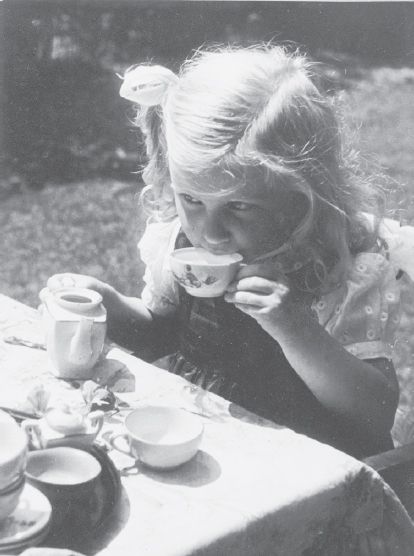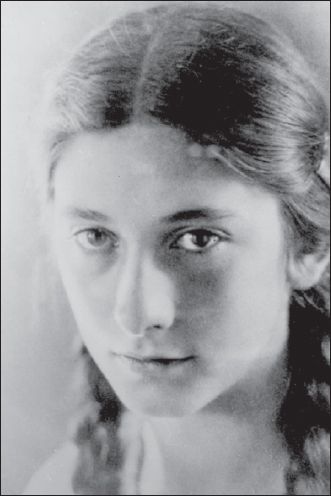The Heart Has Reasons (5 page)

....
Who were these people, willing to help their Jewish co-citizens, come what may? They were people who could not cut their consciences according to Nazi specifications and could not accept the mountain of newly enacted Nazi laws. They were people who were able to live with risk and uncertainty, and who were unafraid—or, at least, undeterred—by the threat of torture and death. Some acted alone, but often they managed to find others who shared their feelings and convictions. And, in some cases, they
organized into groups.
The largest general resistance network involved in helping people to hide was the LO, an acronym for the Landelijke Organisatie voor Hulp aan Onderduikers, started in December 1942 by Reverend Clomp of the Orthodox Calvinist Church. His aim was not specifically to aid the Jews, but to assist Dutch men in evading the Nazi summons to forced labor assignments.
In sheer numbers, the LO assisted more Jewish people to hide than any other organization. However, hiding Jewish people was more involved and dangerous than hiding those who were trying to evade forced labor. People willing to take in Jews were hard to come by, and security issues became much more complicated. And so, since assisting Jews “was thought to present special problems which a mass organization could not handle,” the LO often referred Jewish people to specialty groups.
These humanitarian cells had begun their rescue activities earlier, and some of them concentrated on saving Jewish children. In sharp contrast to the Nazi regime they would attempt to outwit, they were grassroots, informal, and non-hierarchical. There were only a handful of them, none with more than fifteen or twenty members. Three of the main groups of this type were the Utrecht Kindercomité; the Amsterdam Student Group; and the Naamloze Vennootschap (NV).
Among the rescuers profiled in this book, Hetty Voûte, Gisela Söhnlein, and Rut Matthijsen were part of the Utrecht Kindercomité; Piet Meerburg was the cofounder of the Amsterdam Student Group; and Mieke Vermeer was part of the Naamloze Vennootschap (NV).
Because of the secrecy required in the running of such groups, especially the need to avoid keeping written records, there were no doubt other groups that have escaped the attention of historians.For instance, in chapter six, Kees Veenstra, who had never before been interviewed, speaks about a nature study group for young people that became a rescue group, and yet I have found no mention in the historical literature of the group’s secret function.
Whether the rescuers acted independently or as part of a group, they had to play many roles. Hetty Voûte, GiselaSöhnlein, and Kees Veen-stra were primarily involved in helping to find safe addresses for the children, and then transporting them to those addresses. Clara Dijkstra, Heiltje Kooistra, and Janet Kalff all took Jewish children into their own homes, thus providing three such safe addresses. Mieke Vermeermade regular visits to the houses where the children were hiding, bringing the host families food ration coupons and money. Rut Matthijsen helped to raise that money, and Ted Leenders stole large supplies of ration coupons
from government offices. Piet Meerburg, as organizer of the Amsterdam Student Group, developed intricate security measures to ensure that the whereabouts of the Jewish children would not be discovered, even if he or other members of the group were arrested.

Young Jewish girl in hiding in Utrecht, drinking tea. Courtesy
of the United States Memorial Holocaust Museum.
Raul Hilberg writes, “Few Jews survived Holland, but those few were saved as a result of the most strenuous efforts, for Holland was the one territory of the occupied West in which the Jews did not have an even chance to live.” The people profiled in this book were the ones who made those strenuous efforts. All together, they and the other rescuers of Jewish children throughout the Netherlands were able to save more than 4,000 young lives.

ONE
~ HETTY VOÛTE ~
INVINCIBLE SUMMER

In the depth of winter,
I finally learned that within me,
there lay an invincible summer.
—
Albert Camus
Despite having spent nearly two years in prisons and concentration camps, Hetty Voûte is one of the most cheerful and self-assured people I have ever met. Her self-confidence goes hand in hand with a certain playfulness, and may also be the basis of her dry, no-nonsense, candor. Her very manner seems to be saying, “I’m here; I’m glad; I have no regrets, no apologies, and no need to mince words.” She’s both tough and tender—sometimes in the same breath.
We met in Amsterdam on a subdued December morning. Hetty lives in an elegant apartment on one of the loveliest streets in the city, just a few blocks from the Anne Frank House. Entering the quiet hallway, I passed a vase of fresh flowers and climbed the softly carpeted stairs to her inlaid oak door. A stooped yet stately woman with a heart-shaped face and hazel eyes, Hetty welcomed me with a warm smile.
As she stepped into the kitchen for a moment, I surveyed her bookshelf filled with literature in Dutch, English, French, and German, and noted some knickknacks and wall hangings that appeared to date back to the war. The room’s combination of sophistication and comfort was, I soon learned, emblematic of its owner; Hetty’s cosmopolitan manner is interfused with a completely sincere and natural hospitality.
Hetty returned with a pot of coffee, and we spent the afternoon in conversation. Her rich alto voice possesses an easy authority; in the course of a few minutes it can rise to a throaty laugh or lower to a whisper. She took her time answering my questions, pausing whenever she needed to, for as long as she wished. Surely there was a connection between her utter fearlessness during the war, and the sense she projects of being completely comfortable in her own skin.
When describing her wartime experiences, Hetty sometimes uses the word “unbelievable,” and yet she takes her own bravery completely for granted. We, on the other hand, looking back at the Holocaust, have grown accustomed to hearing of its grisly extremes. It is Hetty’s actions that now seem unbelievable to us.

Iam the seventh child of an ordinary Dutch family. I’m from 1918, just at the end of the Great War. I had five brothers and one sister, and I was I the youngest. At the time of the war, I was living at home in Utrecht and going to college. We had seen the war coming for several years. One of my brothers worked for the Dutch airline KLM, and he was in Berlin on Kristallnacht. So he knew
exactly
what was going on there.
Then the Germans invaded. It was a blitzkrieg—a lightning offensive—very sudden. After five days of fighting, Dutch boys were coming back with their legs shot off. When one of them said we had surrendered to the Germans, the people wanted to kill him. It was such a deplorable message.
At the beginning the Germans were very civil—you didn’t know what to do. They behaved courteously and correctly, and many people thought they were not so bad. Early on, Seyss-Inquart issued a statement
saying that he would respect the laws of the Dutch people as much as possible. That’s why two of my brothers started an underground newspaper. They wrote things like, “Don’t be fooled by them—they say they are here to liberate us, but they are stealing everything out of our shops.” Whenever I saw my brothers, their fingers were always black from assembling the news. I learned from those articles what the Nazis were up to, and I decided to throw “the stubborn ounces of my weight” against them. That little poem by Bonaro Overstreet expresses very well how I felt at the time:
You say the little efforts I make
will do no good: they never will prevail
to tip the hovering scale
where Justice hangs in balance.
I don’t think
I ever thought they would.
But I am prejudiced beyond debate
in favor of my right to choose which side
shall feel the stubborn ounces of my weight.
At first there wasn’t much I could do except to deliver my brothers’ illegal newspaper. But I didn’t miss an opportunity to mock the Nazis. In college, we had a very nice end-of-the-year dinner, and there was a girl sitting next to me who was a member of the Nazi women’s auxiliary. When the appetizer was served, it was just a hard-boiled egg, and she complained about it. I said in a loud voice, “One Führer, One Reich, One Egg.” Everybody laughed, and she got up and left. I enjoyed that. Childish stuff, but still. . .
In the fall of 1940, my friend Olga and I moved to Noordwijk, a little village by the sea, in order to do some marine biology research required for our course of study at the university. For this we had to go down to the beach, but the Nazis forbade it unless you had a special pass called a
Strandausweis
. I told them that we needed to go down to the water each day to examine the plankton—that we could tell from the plankton whether the men should go out and fish. That last part was nonsense, but the Nazis cared about the fish supply, so we got our Strandausweis. Every month I had to go to the office of the military commandant to renew it, and that, it turned out, became my entrée into really doing something in the Resistance. You see, there on the wall was a very nice map showing the
locations of all the anti-aircraft guns on that strip of land. I’d take a good look at that map, and then report what I had seen to a boy I knew who had a secret radio transmitter. He would then send the information to British intelligence.
As a child, I had a Jewish girlfriend who would invite me over to her house on Friday night. I remember the glow of the candles and the marvelous songs her family used to sing after the Sabbath meal. I thought of them on 14 July 1942 when there was a big razzia in Amsterdam. The Nazis sealed off a whole block and went running through with their rifles and Doberman dogs shouting, “All Jews out!” We heard how they broke down doors, barged into houses, and roughed up anyone who got in their way.
Many Jewish people were arrested, but afterwards, there were some children left behind, just wandering the streets. A young woman named Ad Groenendijk went walking through the Jewish Quarter and thought, who is going to care for these little ones? She gathered four or five of them up and brought them to the home of our friend Jan Meulenbelt. His mother immediately said they could stay there until other arrangements were made.
